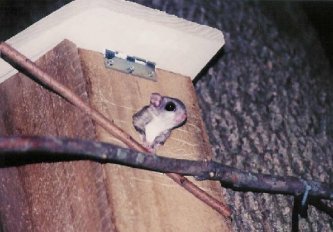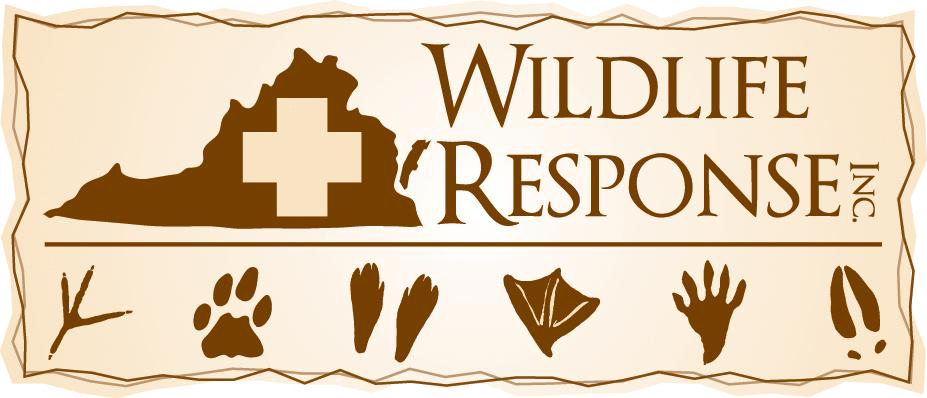(Glaucomy volans)
 There are two species of flying squirrel in North America. They are the only strictly nocturnal squirrel in the New World. They are shy and infrequently seen but reside in an extensive portion of the continental United States. The southern flying squirrel is the species in the Tidewater area of Virginia.
There are two species of flying squirrel in North America. They are the only strictly nocturnal squirrel in the New World. They are shy and infrequently seen but reside in an extensive portion of the continental United States. The southern flying squirrel is the species in the Tidewater area of Virginia.
The most basic fact is that a flying squirrel does not fly. They would be more accurately named the gliding squirrel. A loose fold of skin called the patagium extends from the front ankle to the rear ankle. This fold of skin allows the flying squirrel to glide from tree to tree or limb to limb. It is a unique feature of this species. They are capable of controlling speed and direction with little effort. As they glide, they resemble a square pancake with head, legs and tail. On a familiar glide path, a flier will simply leap out and spread it’s patagium. It uses its powerful back legs to launch itself. The tail serves as a balance, similar to the tail of a kite. The distance a flying squirrel can glide will depend on the slope of the terrain, amount of wind and height the jump began. The distance of the glide will be about 3 feet of distance to each foot of height. Fliers can easily glide 200 feet. When it prepares to land, the squirrel drops its tail and raises its front paws, achieving the same effect as an airplane lowering its flaps. It maneuvers during the glide by moving its legs which thereby tighten or loosen the flaps of skin.
Flying squirrels use a variety of nest sites. A favorite is a tree cavity. Southern flying squirrels will build a summer nest of leaves, usually in hardwood trees , such as oak and hickory. They remain active all year long. In winter, large numbers will share the same cavity. The southern flying squirrel gives birth around April and may have a second litter in August. The litter size varies between 2 and 6 with the average being 3. Females are excellent mothers and will defend their young. Newborn are born naked with only a few whiskers and eyelids and ears are sealed shut. At 4 weeks fur completely covers the body and the upper incisors erupt. Around this time the eyes open. The baby flier is called a pup. At eight weeks the pups are weaned and are gliding and exploring independently.
The adult flying squirrel weighs only 4 ounces and from head to tip of tail is 8 to 10 inches. It is the smallest of the North American squirrels. The fur is extremely soft and fine and varies in color from dark brown to gray with a creamy white underside. The hairs of the tail are flat extend laterally, similar in appearance to a feather.
The flying squirrels eyes are adapted to its nocturnal life style. They are large, very dark and prominent-thus the genus name “glaucomus” . The name stems from the Greek word “glaukos” meaning bluish gray, probably because of the way their eyes reflect light.
They have an excellent sense of hearing. Vocalizations include chirps and twitters. They will make chirping and chittering sounds while gliding. When distressed, young fliers will make a high pitched rasping squeak, described as “tseets”, which is sometimes out of the range of human hearing. Southern flying squirrels are omnivores. Natural foods include lichens, nuts, bark, green tree buds, berries, moths, and slugs. The southern flying squirrel is considered the most carnivorous of all the tree squirrels. They will also eat nestling birds, bird’s eggs, carrion, baby mice and voles, and occasionally adult mice and shrews are killed and eaten by this beautiful little terror. They are more aggressive than their northern cousin.
Enemies of the southern flying squirrel include owls, bobcats, coyotes, foxes, skunks, weasels and snakes. Habitat destruction and domestic cats pose a serious threat to the flying squirrel. The average life span of wild fliers is 2 to 4 years. (reprinted with permission from Wild at Heart)



